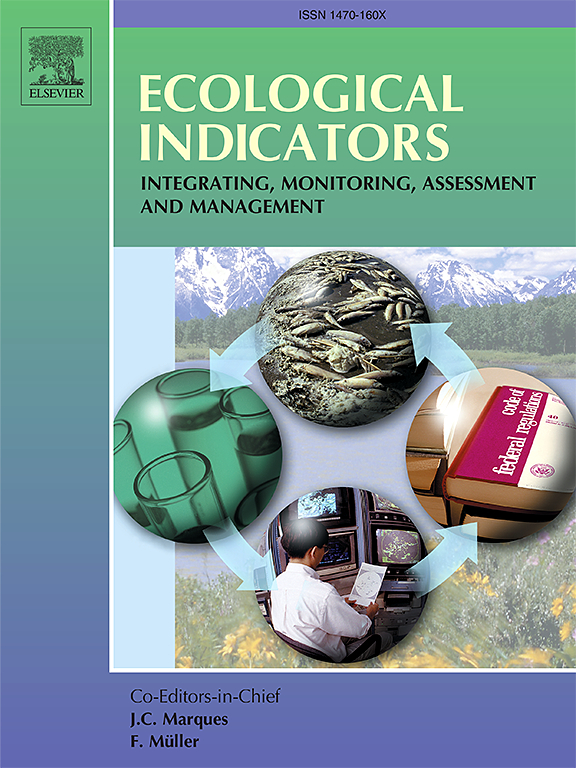Characterization of soundscapes with acoustic indices and clustering reveals phenology patterns in a subtropical rainforest
IF 7
2区 环境科学与生态学
Q1 ENVIRONMENTAL SCIENCES
引用次数: 0
Abstract
Long-term biological and phenological monitoring has become essential for conservation in the face of rapid climate change. In this study, we utilized long-term passive acoustic recording data. We employed a combination of 14 features extracted from acoustic indices and unsupervised clustering methods to classify the soundscapes of Taiwan’s subtropical rainforests. Our results demonstrated that in environments with complex soundscapes, this approach effectively distinguished predominant acoustic elements, including cicadas, orthopterans, rain, and frogs, constituting more than 10–20% of the total audio recordings, and identified smaller yet significant groups, such as avian dawn choruses, accounting for approximately 2% of the recordings. The clustering results enabled the description of dynamic changes in the soundscape throughout the year. In the subtropical rainforest, rain and wind affected the soundscape from October to March, whereas bird songs were prominent only in the early mornings from February to May, which were subsequently replaced by cicada calls that continued until late August. The nocturnal soundscape was dominated by frog calls and orthopteran stridulations in the aquatic and forest habitats. Correlations among the vocal activities of several representative groups, temperature, and rainfall were found. Our study confirms that acoustic indices can extract meaningful ecological features, and unsupervised algorithms offer valuable insights into biodiversity exploration data-scarce regions. The combination of these methods has led to the development of non-species-specific soundscape classification, which not only facilitates the monitoring of phenological dynamics across multiple biological groups in the face of climate change but also lays the foundation for further exploration of key taxa.

求助全文
约1分钟内获得全文
求助全文
来源期刊

Ecological Indicators
环境科学-环境科学
CiteScore
11.80
自引率
8.70%
发文量
1163
审稿时长
78 days
期刊介绍:
The ultimate aim of Ecological Indicators is to integrate the monitoring and assessment of ecological and environmental indicators with management practices. The journal provides a forum for the discussion of the applied scientific development and review of traditional indicator approaches as well as for theoretical, modelling and quantitative applications such as index development. Research into the following areas will be published.
• All aspects of ecological and environmental indicators and indices.
• New indicators, and new approaches and methods for indicator development, testing and use.
• Development and modelling of indices, e.g. application of indicator suites across multiple scales and resources.
• Analysis and research of resource, system- and scale-specific indicators.
• Methods for integration of social and other valuation metrics for the production of scientifically rigorous and politically-relevant assessments using indicator-based monitoring and assessment programs.
• How research indicators can be transformed into direct application for management purposes.
• Broader assessment objectives and methods, e.g. biodiversity, biological integrity, and sustainability, through the use of indicators.
• Resource-specific indicators such as landscape, agroecosystems, forests, wetlands, etc.
 求助内容:
求助内容: 应助结果提醒方式:
应助结果提醒方式:


